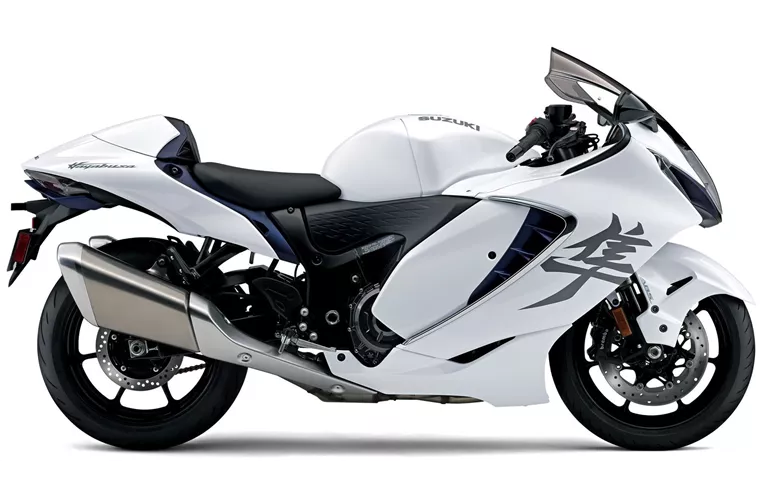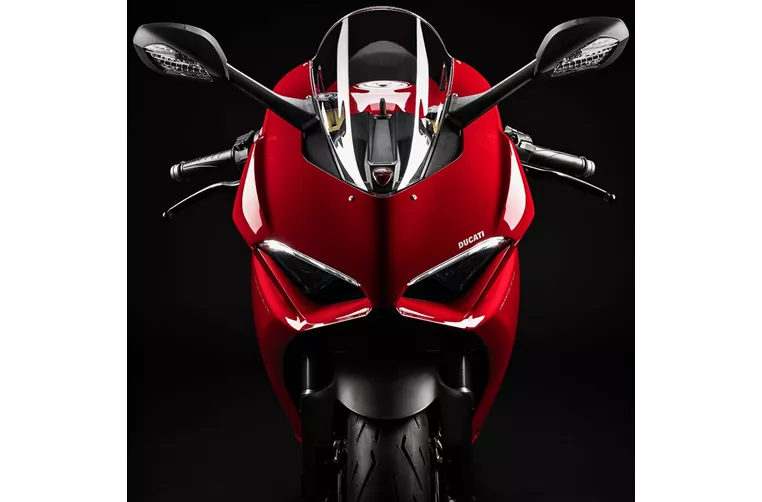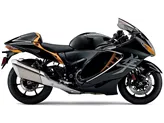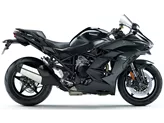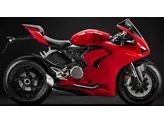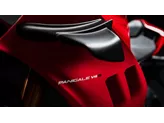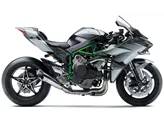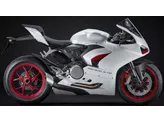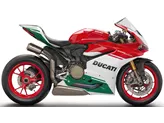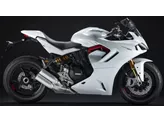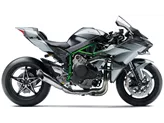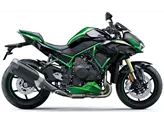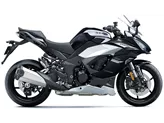Suzuki GSX 1300 R Hayabusa 2022 vs. Ducati Panigale V2 2020
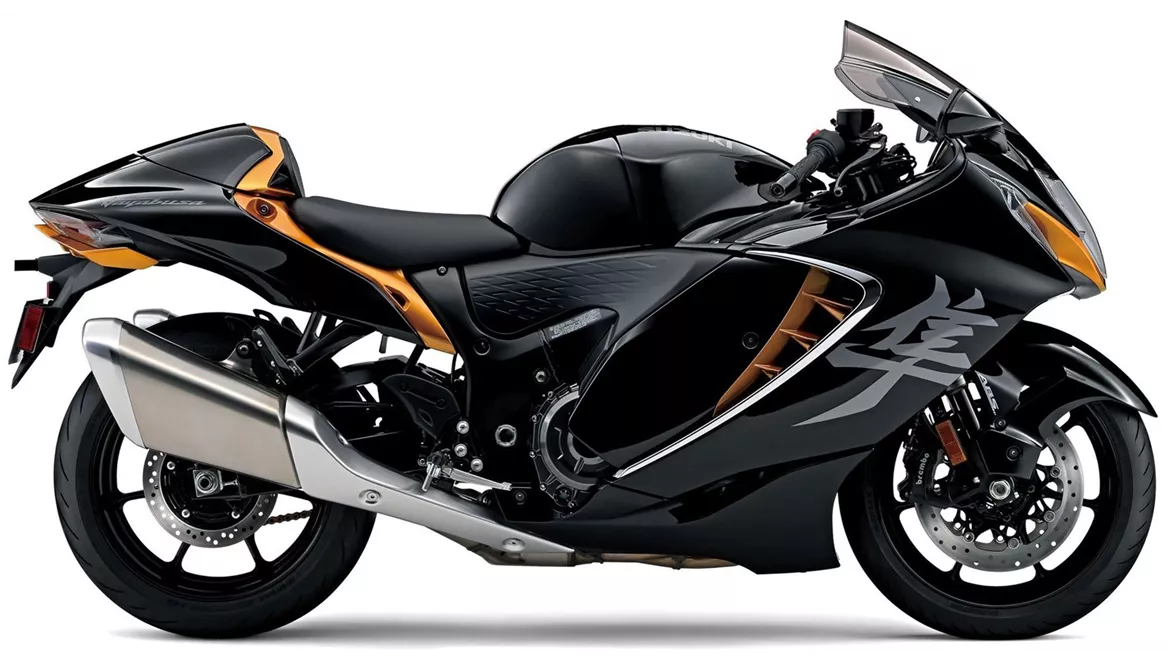
Suzuki GSX 1300 R Hayabusa 2022
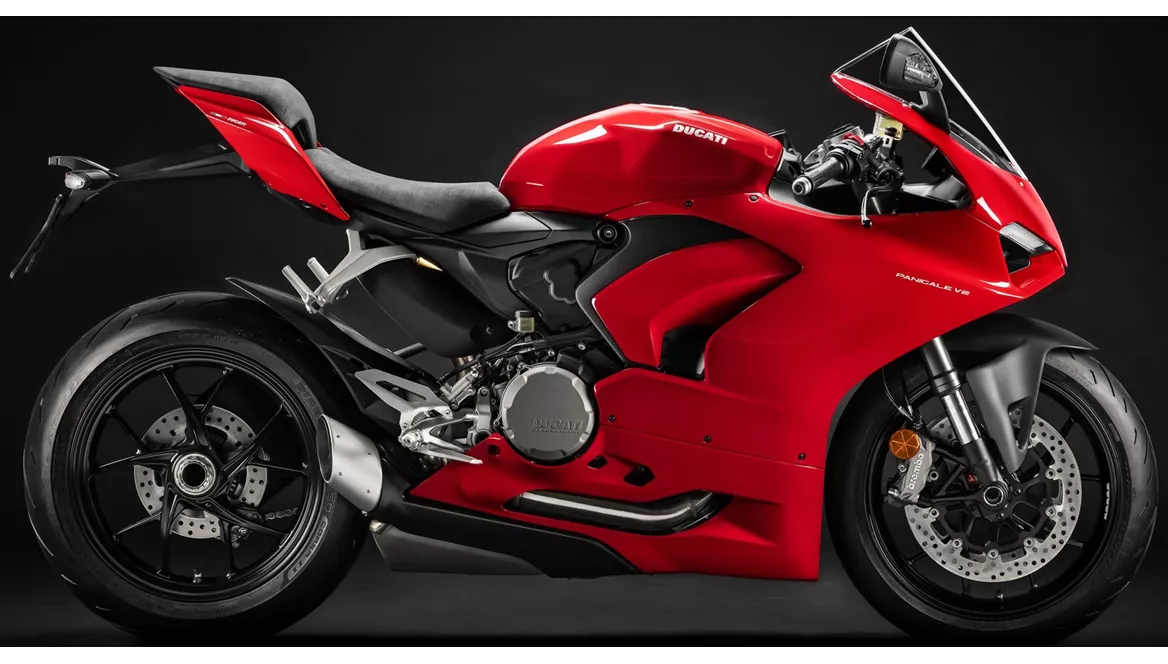
Ducati Panigale V2 2020
Overview - Suzuki GSX 1300 R Hayabusa 2022 vs Ducati Panigale V2 2020
In terms of engine and drive train, the Suzuki GSX 1300 R Hayabusa 2022 features an in-line engine with a bore of 81 mm and a stroke of 65 mm. It delivers an impressive engine power of 190 HP and a torque of 150 Nm. The compression ratio is 12.5 and it has 4 cylinders and DOHC valves. On the other hand, the Ducati Panigale V2 2020 has a V-type engine with a bore of 100 mm and a stroke of 60.8 mm. It offers a slightly lower engine power of 155 HP and a torque of 104 Nm. Like the Hayabusa, it also has a compression ratio of 12.5, but it only has 2 cylinders and desmodromic valves. The displacement of the Hayabusa is 1340 ccm, while the Panigale V2 has a smaller displacement of 955 ccm.
In terms of suspension, both bikes have upside-down telescopic forks at the front. The Hayabusa is equipped with Kayaba suspension, which offers adjustment options for compression, preload, and rebound. The rear suspension of the Hayabusa is a swing arm with a monoshock, also from Kayaba, and it offers the same adjustment options. The Panigale V2, on the other hand, has Showa front suspension with similar adjustment options, and a single swing arm with a Sachs monoshock at the rear, which also offers compression, preload, and rebound adjustment. Both bikes have an aluminum frame, with the Hayabusa having a twin-spar frame, while the Panigale V2 has a monocoque frame. The Hayabusa has a rake of 23 degrees and a trail of 90 mm, while the Panigale V2 has a steeper rake of 66 degrees and a trail of 94 mm.
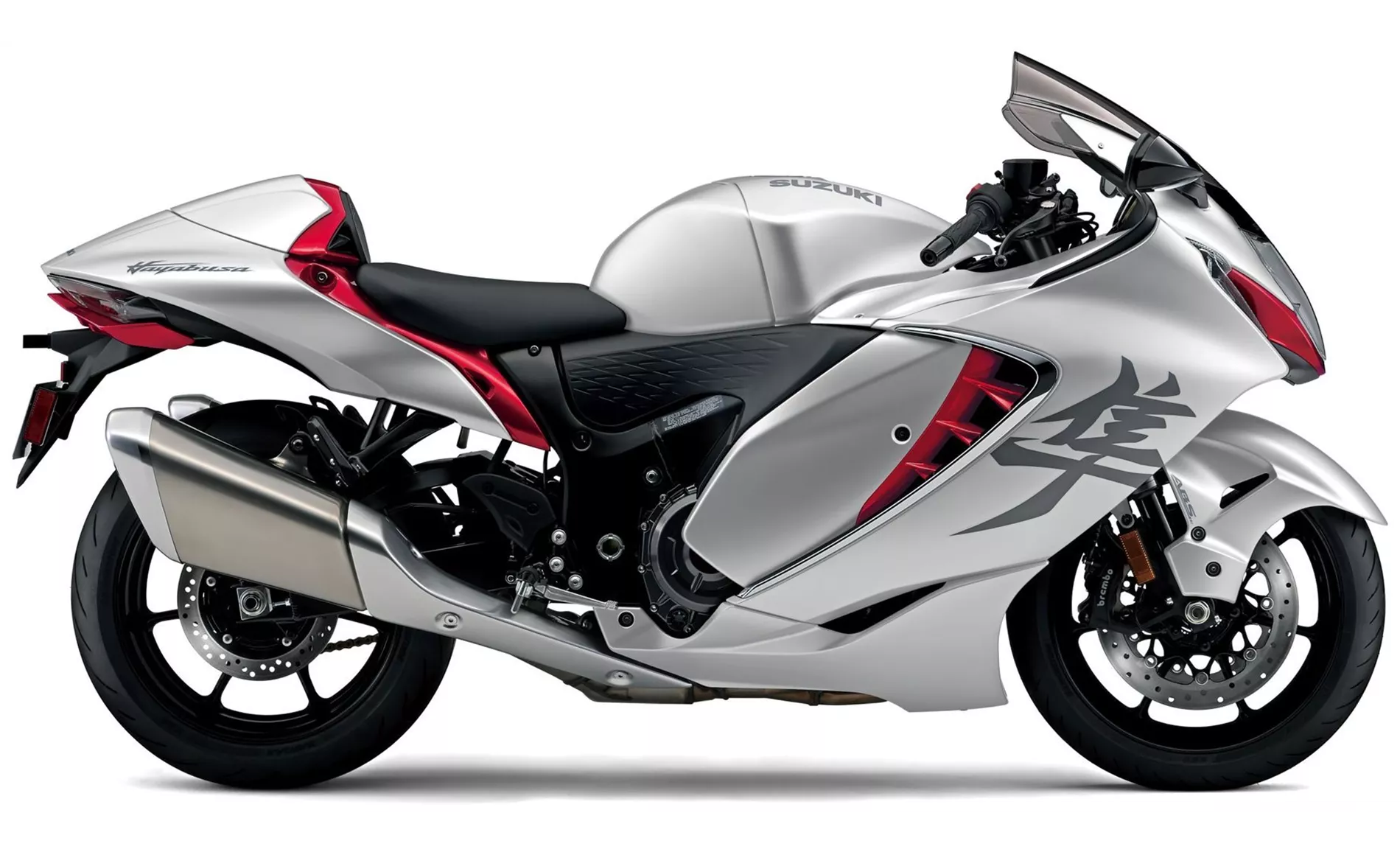
Suzuki GSX 1300 R Hayabusa 2022
In terms of brakes, both bikes have double disk brakes at the front with a diameter of 320 mm and Brembo as the brand. The Hayabusa comes with advanced rider assistance systems including ABS, anti-rollover control, hill start assist, riding modes, combined brake system, cornering ABS, launch control, ride by wire, shift assistant with blipper, cruise control, traction control, and anti-wheelie. The Panigale V2 also has advanced rider assistance systems including riding modes, cornering ABS, ride by wire, quickshifter, traction control, and anti-wheelie.
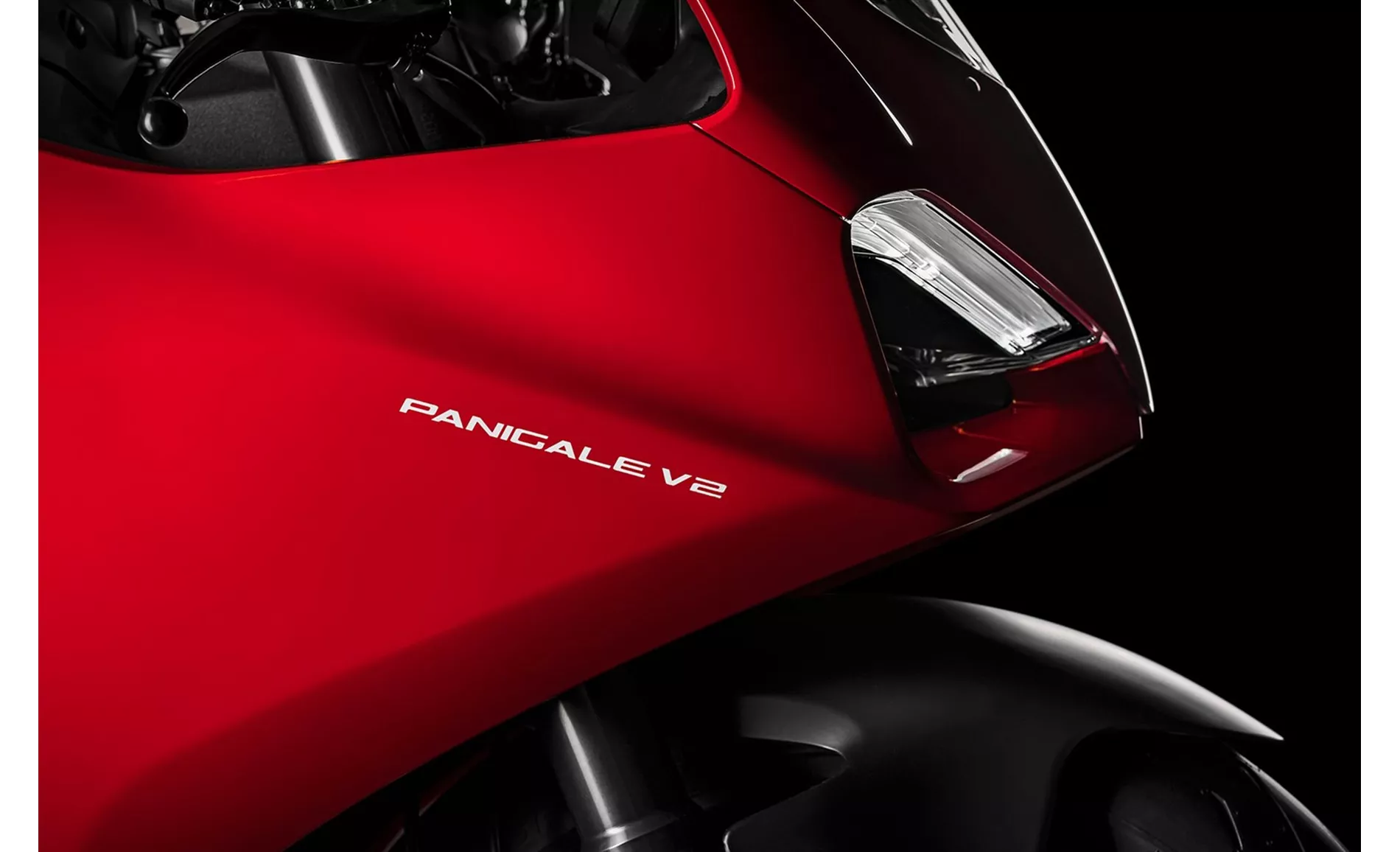
Ducati Panigale V2 2020
In terms of dimensions and weights, the Hayabusa has a front tire width of 120 mm and a rear tire width of 190 mm, both with a diameter of 17 inches. It has a wheelbase of 1480 mm and a seat height of 800 mm. The kerb weight of the Hayabusa with ABS is 264 kg and it has a fuel tank capacity of 20 liters. The Panigale V2 has a front tire width of 120 mm and a rear tire width of 180 mm, also with a diameter of 17 inches. It has a slightly shorter wheelbase of 1436 mm and a higher seat height of 840 mm. The kerb weight of the Panigale V2 with ABS is significantly lighter at 200 kg and it has a fuel tank capacity of 17 liters.
Both bikes come equipped with LED headlights, which provide excellent visibility. The Hayabusa is known for its wonderful engine, offering unmatched sovereignty, and its comfortable seating position that is still front-wheel-oriented. It also has a stable braking system and a mature chassis. However, it is not a bargain and its high weight may be a drawback for some riders. On the other hand, the Panigale V2 stands out with its beautiful and noble design, which is sure to turn heads. It has an outstanding electronics package that ensures both safety and fun on the road. The combination of the engine, ergonomics, and electronics make it an incredibly immersive experience. It is considered a great choice for supersport beginners and returners. However, some riders may find that it lacks a few horses compared to other engines of similar size, and its true potential is only fully realized in Race mode. Overall, both bikes have their own strengths and weaknesses, and the choice between them will ultimately depend on the rider's preferences and priorities.
Technical Specifications Suzuki GSX 1300 R Hayabusa 2022 compared to Ducati Panigale V2 2020
Pros and Cons in comparison
Pros and Cons in comparison
Suzuki GSX 1300 R Hayabusa 2022
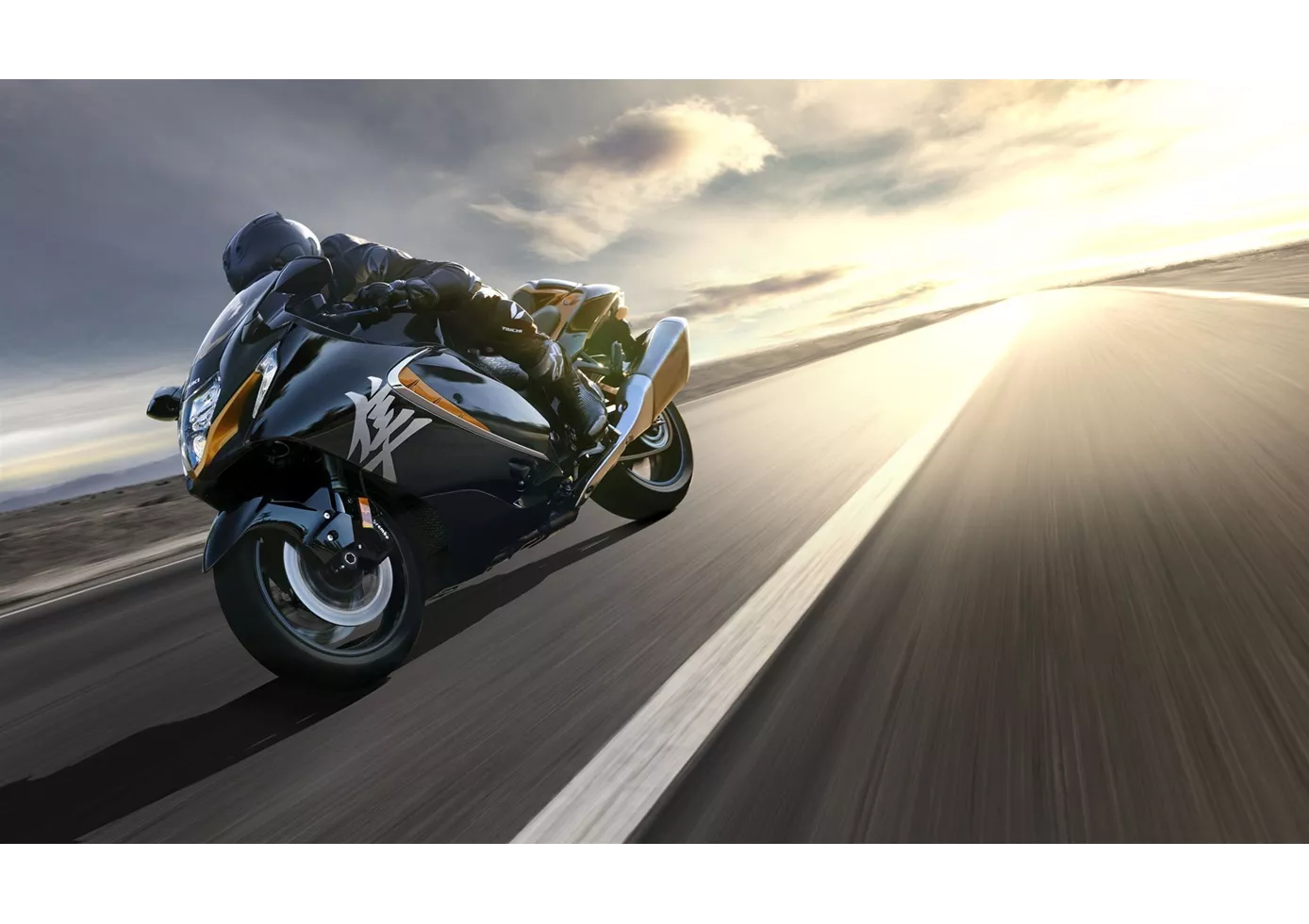
The Hayabusa is an absolute legend, the first production motorbike to run at over 300 km/h cannot be dismissed as a minor matter. With the new Busa, however, Suzuki has recognised the signs of the times. The current model, with its extensive electronic equipment including cruise control as standard, is an excellent hyper-tourer. The ergonomics are still sport-oriented, but the rider sits well integrated in the machine and thus also enjoys good wind protection. The brakes are stable, the handling is fine and the chassis is wonderfully stable and mature. The icing on the cake is, of course, the huge 1340 cubic in-line four-cylinder engine, which impresses with its 190 hp alone. Even better, however, is the maximum torque of 150 Newton metres, which is felt to be available from idle speed. In terms of sovereignty, this engine is hard to beat!
Ducati Panigale V2 2020
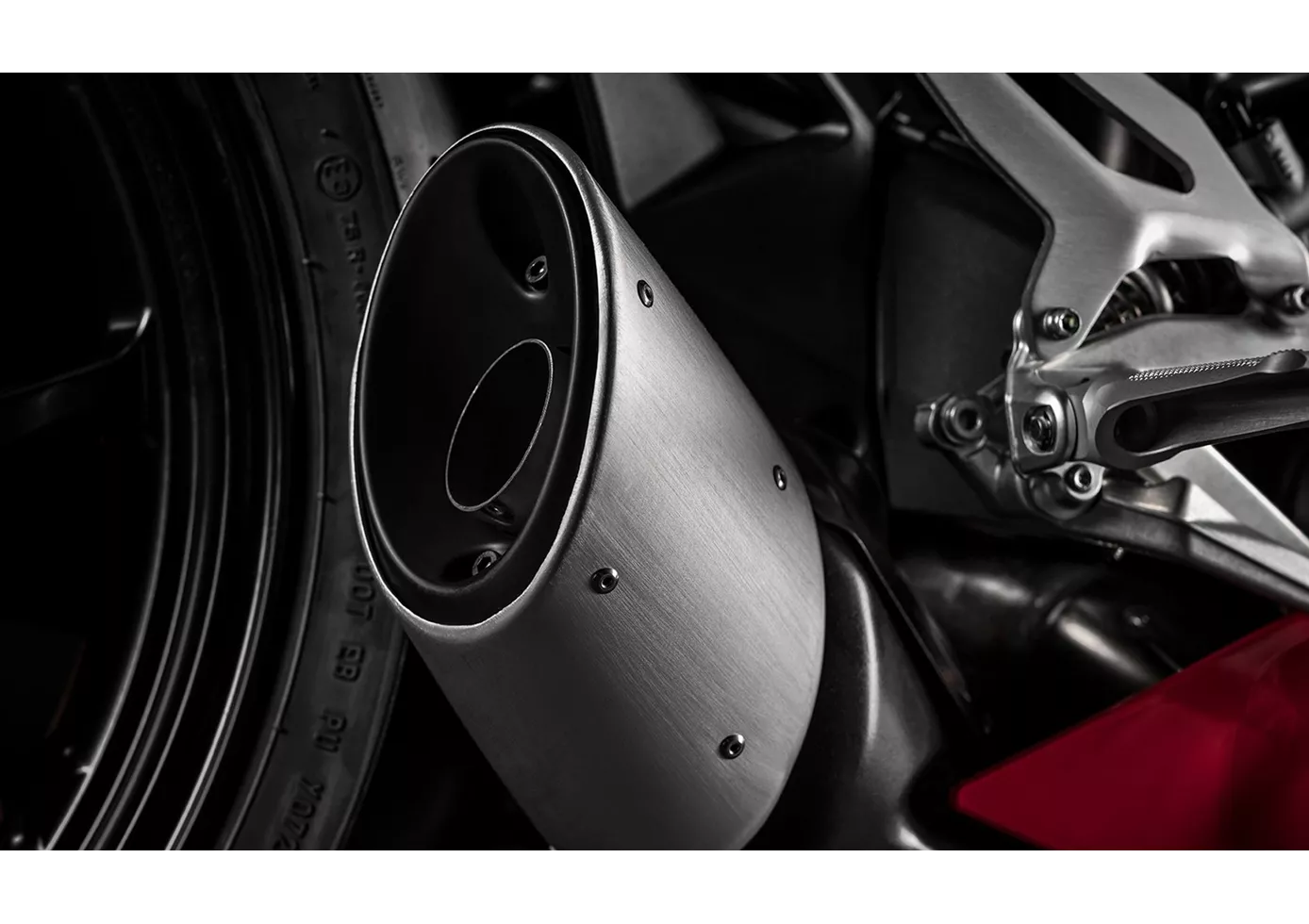
For us, the Panigale V2 is the ultimate road super sports bike. Sophisticated electronic assistance systems that leave nothing to be desired, Ducati's fun 955 cm³ two-cylinder Superquadro engine that generates more than enough power for the road with 155 hp, a great seating position and a high degree of controllability. All of this characterises the Panigale V2 and for this reason it is probably "the" country road supersports bike for us at the moment, but it also cuts a good figure on the racetrack. The Panigale V2 should appeal above all to pilots for whom 200 hp rockets are a bit too much, and to all those who have also been enchanted by this work of art on two wheels.
Price Comparison Avarage Market Price Suzuki GSX 1300 R Hayabusa vs Ducati Panigale V2
There are a few key differences between a Suzuki GSX 1300 R Hayabusa 2022 and a Ducati Panigale V2 2020. In terms of price, the actual average price of a Ducati Panigale V2 2020 is about 7% higher. Compared to Ducati Panigale V2 2020 there are more Suzuki GSX 1300 R Hayabusa 2022 bikes available on the 1000PS.de Marketplace, specifically 12 compared to 5. It takes less time to sell a Ducati Panigale V2 with 84 days compared to 136 days for the Suzuki GSX 1300 R Hayabusa. Since model year 2005 1000PS.de editors have written 24 reviews for the Suzuki GSX 1300 R Hayabusa and 9 reviews for the Ducati Panigale V2 since model year 2020. The first review for the Suzuki GSX 1300 R Hayabusa was published on 10/07/2007 and now has more than 10,000 views. This compares to more than 70,000 views for the first review on Ducati Panigale V2 published on 23/10/2019.
